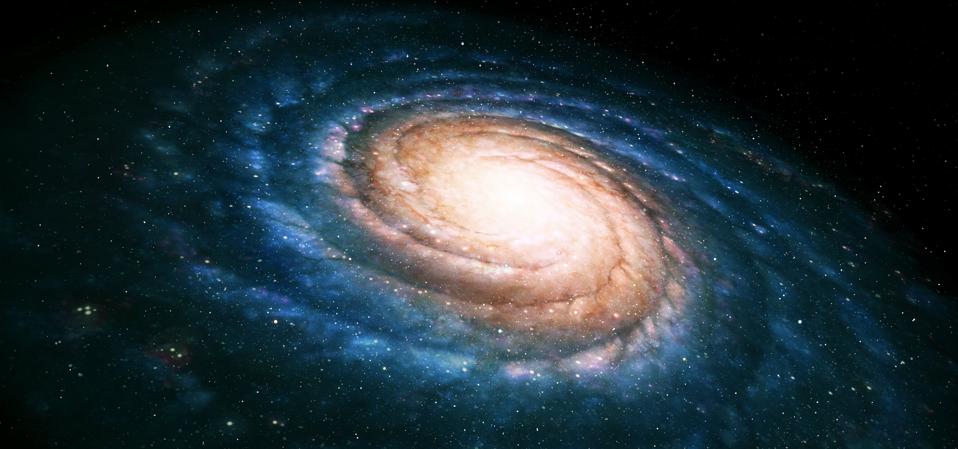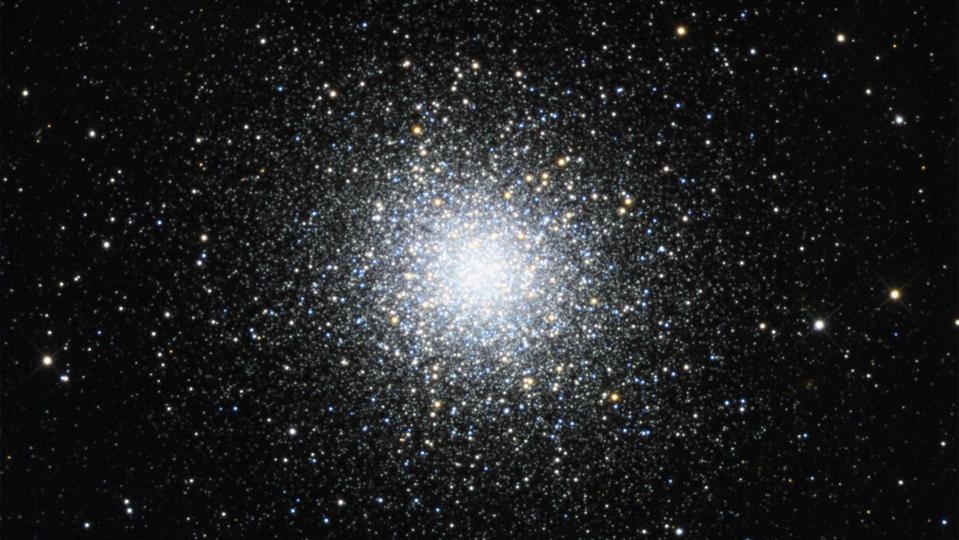The Perplexing Question Of Missing Cosmic Antimatter

As beautiful as the universe is, astronomers still can’t explain why it is the way it is. The … [+]
getty
A physics paper released in November 2020 explores a proposed answer to the question of potentially cosmic import. Large amounts of antimatter are expected to be the found in the cosmos, and we’ve found none. This paper talks about one possible location. As we will see, the proposal is probably incorrect. But the question of the missing antimatter is an important one and it’s worth exploring any possible solution. So why is the lack of antimatter a problem?
Probably the best-known equation in all of science is Einstein’s famous E = mc2. At its simplest, it says that energy (E) is the same as (=) mass (m), times a constant (c2). Colloquially, we can say that energy can convert into matter and back again. However, that statement is a little incomplete. It is more accurate to say that energy can convert into equal amounts of matter and antimatter.
Antimatter is a sibling of ordinary matter, identical in every way, except for having an opposite charge. Furthermore, like siblings with bad blood between them, combining matter and antimatter will result in explosive fireworks – meaning a huge release of energy. Combine a matter electron with an antimatter electron, and the energy will be released in the form of two gamma rays of radiation, which can easily be detected.
And the process goes both ways. High energy forms of light can, under the right conditions, convert into an electron and antimatter electron. Scientists have been able to study both the creation and annihilation of antimatter for nearly a century. Both theory and experiment are in good agreement.

Illustration of the expansion of the Universe. The Cosmos began 13.7 billion years ago in an event … [+]
Getty
MORE FOR YOU
That agreement falters a bit when the process is applied to the cosmos as a whole, especially when the birth of the universe is taken into account. The leading theory of the origin of the universe is the Big Bang, which says that the entire universe was once compressed to a volume much smaller than an atom. As the universe expanded, it began very small and hot and full of energy, before evolving to the large and cool version we see every time we look up at the night sky.
It’s that hot phase that is important. Early in the history of the universe, it was filled with energy. According to Einstein’s famous equation, that energy should have converted into matter and antimatter in equal quantities. As the universe cooled and expanded, some of that matter and antimatter would have recombined and returned to energy. However, no matter how much had been recombined, we should see equal amounts of matter and antimatter in our current universe.
Yet we don’t. We see only matter. Why is that?
The short answer is that we don’t know with 100% certainty, but the best current scientific thought suggests that early in the history of the universe – within the first second of existence – a physical phenomenon slightly favored matter over antimatter. For every 3,000,000,000 antimatter particles, there were 3,000,000,001 matter particles. The three billions annihilated, leaving the tiny matter excess that went on to make the stars and galaxies we see today. There are ongoing experiments here on Earth to study this phenomenon, including the Deep Underground Neutrino Experiment (DUNE), being built at Fermilab. (Disclosure: I am a Fermilab scientist, but I have no connection to DUNE.)
But

An experiment being built at Fermilab will study ghostly particles called neutrinos to see if they … [+]
Fermilab
there are other ideas. One common idea is that galaxies are made of either matter or antimatter. On the face of it, this isn’t so ridiculous. As long as antimatter is isolated from matter, antimatter is as stable as ordinary matter. Furthermore, you can make antimatter atoms, molecules and complex structures. It is completely reasonable using well accepted physical principles to have antimatter stars, moons, and planets. And, on the right antimatter planet, there could be an antimatter you, drinking antimatter Gatorade to rehydrate you after your morning run. All of that is totally possible from a physics point of view.
However, we know that this isn’t the answer. There are many examples of colliding galaxies and if half of them are matter and half are antimatter, we should see many examples of matter and antimatter galaxies colliding. While the stars in colliding galaxies would rarely actually collide, the gas within the galaxies would mix. All gas is made of atoms, which contain electrons (or antimatter electrons for antimatter galaxies). If the matter and antimatter gas ever hit one another, the matter and antimatter electrons would annihilate and make two gamma rays, each with a specific energy (511,000 electron volts) and we’d be able to see that specific energy gamma ray, and we don’t.
So, we can be pretty sure that there are not antimatter galaxies out there. And, even if somehow matter and antimatter galaxies never collided, we’d still have an antimatter cloud of antihydrogen hanging around an antimatter galaxy. When that cloud interacted with intergalactic hydrogen, we’d see the same thing – an excess of gamma rays with a very specific energy. And, again, we don’t see that.
Now the scientific paper released in November 2020 postulates something similar. It suggests that within our galaxy there might consist globular clusters of antimatter stars. Globular clusters contain a few thousand to perhaps a million stars. They are tightly bound together by gravity and tend to be older than most stars. Furthermore, within the cluster, there is generally very little free gas.

Messier 13 ,also called the ‘Great globular cluster in Hercules’, is one of the most prominent and … [+]
getty
The paper suggested that antimatter globular clusters might exist in the Milky Way. In these globular clusters, antimatter stars would go supernova and shoot anti-helium out into interstellar space. If that happened, the motion of antihelium would be affected by the magnetic field of the Milky Way and thus here on Earth, we’d detect antihelium, but not know where it originated. And we do detect a small amount of antihelium in cosmic rays from space – in fact, more than is predicted from more mundane sources.
On the other hand, each antimatter globular cluster has the equivalent of a “solar wind,” which would shoot antimatter protons and electrons out into interstellar space. If that happened, you’d expect to see the characteristic kinds of gamma rays from electron and antimatter electron annihilation, and we don’t see that.
Furthermore, even if antimatter globular clusters existed, it doesn’t solve the mystery of the missing antimatter. There are between 150 and 200 globular clusters in the Milky Way, with a combined mass no more than about 150 million solar masses. The entire Milky Way has a mass of more like 300 billion solar masses – over a thousand times the mass of the globular clusters. So it’s not like there is enough antimatter in these supposed globular clusters of antimatter stars. Thus, it is very unlikely that this conjecture is true.
Still, it’s always interesting to entertain creative questions, even if they are likely to be wrong. It’s by ruling out wrong ideas that science advances. And we’re still left with the very fascinating question of where the antimatter went. There is scientific immortality waiting for the person or group of people who figures that out.
